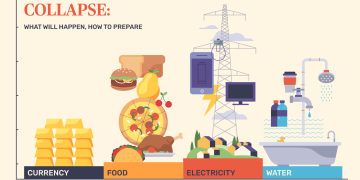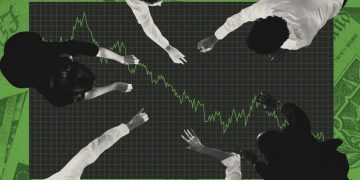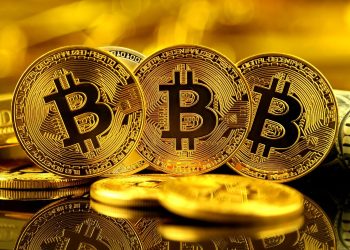In the quiet undercurrent of the global financial system lies a powerful force: foreign exchange reserves. These massive war chests, held primarily by central banks, are not just emergency buffers. They influence currency stability, sovereign creditworthiness, trade balances, capital flows — and even geopolitical leverage.
Now, as major FX reserve holders like China, Japan, Saudi Arabia, and Switzerland adjust the scale and composition of their reserves, global markets are paying closer attention. Unlike short-term market noise, these movements signal deep structural shifts — and their ripple effects can reshape currencies, bond markets, commodities, and capital allocation.
This article explores what’s behind the changing strategies of the world’s biggest reserve holders, how their decisions reverberate through global asset classes, and why investors and policymakers should not underestimate the multiplier impact of foreign reserve rebalancing.
I. The Global FX Reserve Landscape: Still Massive, But Changing Fast
1. FX Reserves at a Glance
- As of mid-2025, global FX reserves total over $12.5 trillion, according to IMF data.
- More than 60% is still held in U.S. dollars, followed by the euro (~20%), Japanese yen, British pound, Chinese yuan, and other currencies.
- Top reserve holders include China, Japan, Switzerland, Russia, Saudi Arabia, Singapore, and India.
2. Trends Worth Watching
- De-dollarization momentum: Some countries are diversifying out of USD assets, partly due to geopolitical tensions and sanctions risk.
- Gold accumulation: Central banks are adding gold to FX portfolios at the fastest pace in over five decades.
- Shift toward yuan: Driven by China’s growing trade footprint and bilateral deals in local currency.
These changes are slow-moving, but once certain thresholds are breached, market reactions can be sudden and dramatic.
II. Why Do Reserve Changes Matter to Markets?
FX reserves are not just central bank savings accounts — they are levers of macro stability, currency support, and financial signaling. Their movement affects global markets in several ways:
1. Currency Valuation & Volatility
When a major reserve holder buys or sells foreign assets, it directly affects currency demand. For example:
- China reducing USD reserves could weaken the dollar and support the yuan.
- Japan intervening in FX markets by deploying reserves can reverse yen depreciation quickly.
- Saudi Arabia converting petrodollars into non-dollar assets impacts dollar liquidity and EM currency strength.
These flows often lead to rapid adjustments in forex markets, especially in illiquid environments or amid geopolitical stress.
2. Sovereign Bond Yields and Demand Curves
Many countries hold U.S. Treasuries, German bunds, and other sovereign bonds as core reserve assets. Their demand affects:
- Yield levels: Heavy reserve accumulation can suppress yields by increasing demand.
- Curve shape: Selling long-duration bonds can steepen yield curves.
- Liquidity premiums: Sudden reserve liquidations introduce volatility into bond markets.
Example: If Japan or China reduces U.S. Treasury holdings, yields could rise significantly, especially when domestic demand is weak or the Fed is not actively buying.
3. Commodity Demand and Pricing
Some reserve-rich nations (like oil exporters or resource-heavy economies) rebalance between FX reserves and commodity-linked sovereign wealth funds (SWFs). This affects:
- Oil and gold prices, especially when part of reserves are converted into physical commodities.
- Industrial metals, as countries like China tie reserves to strategic material stockpiling.
- Food security purchases, linked to FX buffers in agrarian economies.
Thus, reserve strategy shifts often coincide with commodity demand cycles, especially in times of inflation or geopolitical risk.
III. Key Countries Driving the Reserve Rebalancing Narrative
1. China: Gradual Diversification With Geopolitical Overtones
- Once holding over $3.2 trillion, China has reduced its U.S. Treasury holdings for ten consecutive quarters, now under $800 billion.
- Increasing exposure to euro-denominated assets, gold, and strategic SWF investments in BRI countries.
- Actively promoting yuan settlement with trade partners, thereby reducing the need for dollar accumulation.
Market impact: Dollar weakness over the medium term, volatility in emerging market FX pairs, gold price strength, and reduced support for U.S. long bonds.
2. Japan: FX Intervention Cycle Reignited
- With reserves around $1.2 trillion, Japan remains a top U.S. bondholder but has used FX reserves for yen defense multiple times in 2024–25.
- Intervention is often rapid and large in scale, disrupting FX momentum and hedging strategies.
Market impact: Sudden FX reversals, short-term yield spikes, and risk-off responses in global equities.
3. Saudi Arabia and GCC: Petrodollar Reallocation
- Rising oil revenues have led to a fresh FX reserve build-up, but more of it is being channeled into:
- Diversified SWF investments across tech, infrastructure, and renewables.
- Non-dollar assets, including yuan and gold.
- Strategic alignment with China and Asia also shifts reserve allocations eastward.
Market impact: Pressure on USD strength, SWF-driven capital flows into alternative markets, support for commodities and infrastructure assets.
4. India and ASEAN: Building Strategic Buffers
- India and ASEAN nations like Indonesia and Vietnam are actively growing reserves, often via trade surpluses and FDI inflows.
- Composition is increasingly diversified: gold, local currency swap lines, and limited yuan exposure.
Market impact: Enhanced regional FX stability, growing monetary autonomy, and rising demand for regional bond markets.

IV. Hidden Domino Effects: Secondary Markets React Too
1. Swap Markets and Cross-Currency Basis Swaps
- Reserve holders often manage liquidity via FX swaps, affecting the cross-currency basis.
- For instance, a shift from dollar to euro reserves widens the USD/EUR basis, making it more expensive to hedge.
This reverberates through derivatives markets, corporate FX hedging strategies, and bank funding costs.
2. Emerging Market Portfolio Flows
- EMs with falling reserves often face capital flight, rating downgrades, or currency spirals.
- Conversely, rising reserves attract inflows due to perceived stability.
Reserve signals can front-run actual capital market moves, giving early warning signs to institutional investors.
3. Central Bank Signaling and Market Psychology
- When major central banks increase gold holdings or reduce dollar exposure, it sends psychological signals about future alignment, inflation risk, or systemic distrust.
- Markets react not only to quantity but direction and timing of reserve moves.
V. Strategic Takeaways for Investors and Policymakers
1. Watch Reserve Data as a Leading Indicator
- Official reserves are reported monthly (or quarterly), but trends form early.
- Tracking changes in major holders’ compositions can preempt asset class rotations — especially in FX and rates.
2. Model Reserve Behavior in Macro Scenarios
- During geopolitical tensions, FX stress, or commodity shocks, reserve strategies change rapidly.
- Investors should model “what-if” scenarios: e.g., “What happens if China sells $100B in Treasuries?” or “If oil drops, will GCC stop diversifying reserves?”
3. Prepare for Market Interventions and Liquidity Crunches
- When reserve use overlaps with FX intervention or bond buying/selling, liquidity dries up fast.
- Traders, hedgers, and sovereign issuers should prepare contingency buffers.
Conclusion: Reserve Movements Are Quiet, But Never Neutral
While headlines focus on CPI, GDP, and central bank rates, the shifting posture of foreign exchange reserve giants often flies under the radar — until it doesn’t. These quiet, calculated reallocations are not just bookkeeping adjustments. They are signals of intent, reflections of trust, and triggers for market re-pricing.
From currency swings to bond market fragility and commodity reratings, FX reserve shifts can spark domino effects far beyond their origin points. As global power realigns and multi-polarity increases, expect reserve strategies to become more tactical, more political, and more market-moving.
For anyone managing global exposure — whether in sovereign debt, FX, commodities, or multi-asset portfolios — the question is no longer if reserve shifts matter. It’s whether you’re watching closely enough to catch the first tile falling.





























